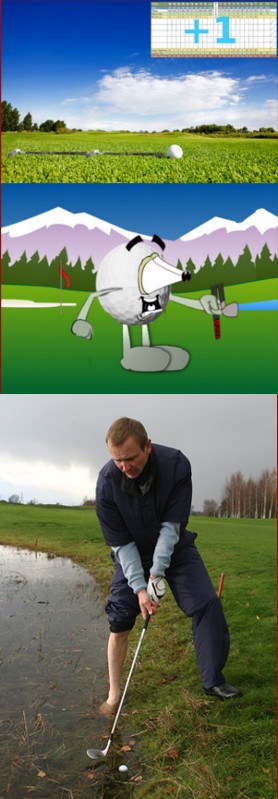The vast majority of this website’s content is designed to keep you out of trouble on the golf course. Despite our best efforts and yours, however, it’s a near certainty you’ll find trees, water, rocks or other undesirable spots from time to time. It happens to the best players on earth.

When the inevitable occurs, you’re often faced with a decision: Play the ball as it lies, or incur a penalty and take a drop? Sometimes, there’s not much choice – maybe your ball is directly against a tree, or buried in a thicket of dense brush. Hittable and playable can be two different things.
The first rule of these situations? Know the rules. You may be entitled to a free drop (if your ball lies on a cart path or behind a shed, for instance), or be allowed to move an obstacle next to it (a loose impediment such as a rock, provided you’re not in a hazard). Playing a tough shot only to find out you could have dropped without penalty is a real kick in the teeth.
(FYI: You can purchase a copy of the Rules of Golf via the USGA or R&A websites.)
Once you’ve determined that, no, you can’t take a free drop, you must assess the situation. Here are some handy questions to ask when you stray off path:
Can I easily advance the ball to a better spot than my nearest relief?
You can declare an unplayable lie and drop, adding a one-stroke penalty, within two club lengths of your ball (no nearer the hole), or drop on a line behind your ball keeping that spot between you and the hole. If you enough have room to swing or chip out, find your nearest relief point and decide whether you can expect to do better by hitting. If not, take the drop. If so, play away.
Do I risk injury to myself or the club?
Always check carefully for roots, rocks, hidden cart path (under leaves or pine straw) or other firm or fixed objects lying near your ball. Loose items like leaves, twigs or pebbles may be moved, so long as you don’t move your ball in the process. The last thing you want is to smash the club into a root or buried rock, potentially bending the shaft and damaging your hand or wrist in the process. Unless a major title is on the line, it’s not worth it.
My ball is in the water: Is part of it above the surface?
A ball that lies near the edge of a pond or stream may well be playable. First, look closely to see if half or more of the ball appears above the surface. If so, and if you can get decent footing, it’s not an impossible shot. Here’s how it’s done:
When and How to Play from a Water Hazard (video)
Actually, your first move should be to check for the presence of toothy or venomous reptiles in the vicinity. A one-stroke penalty is nothing compared to a snake bite.






